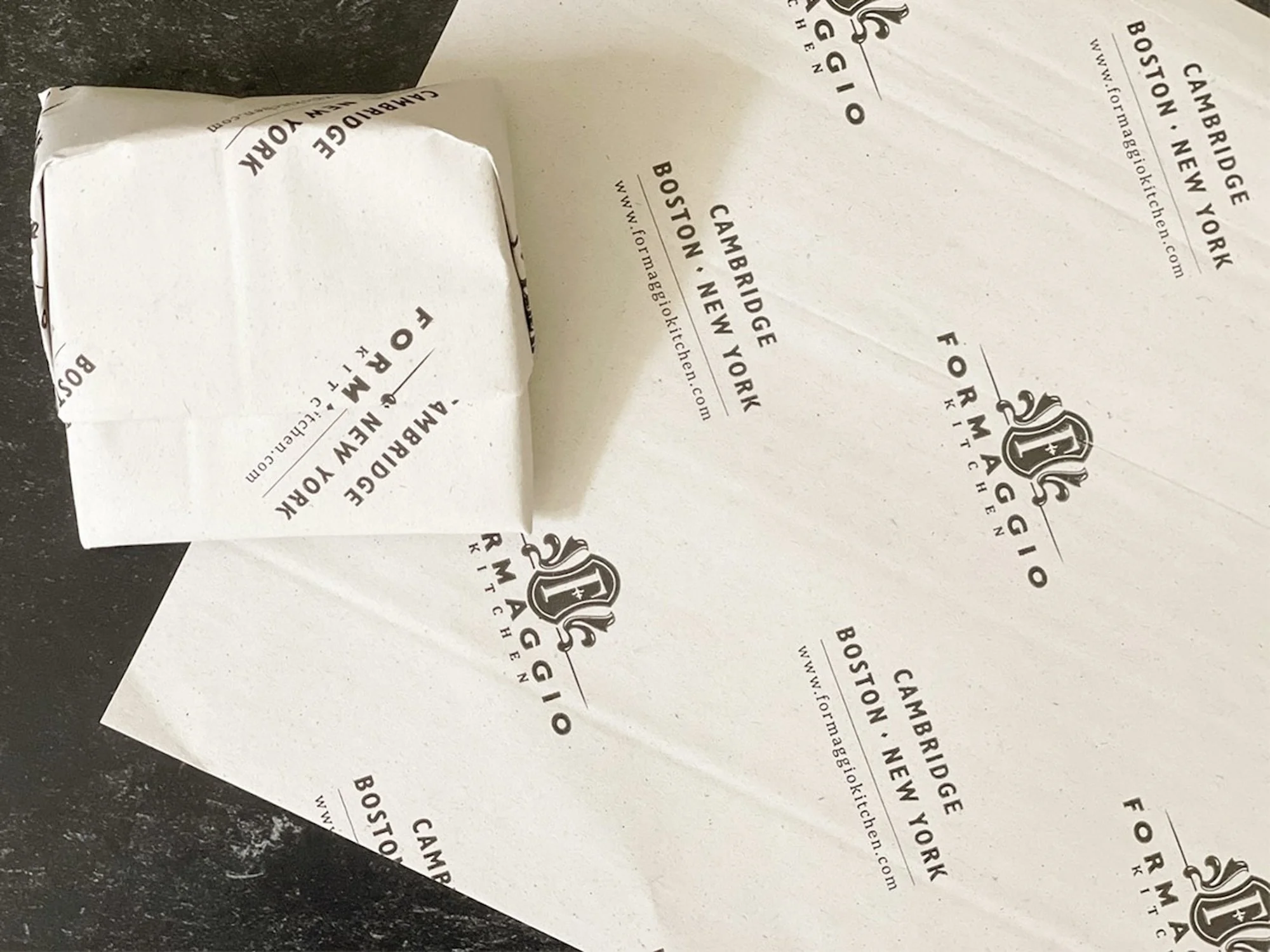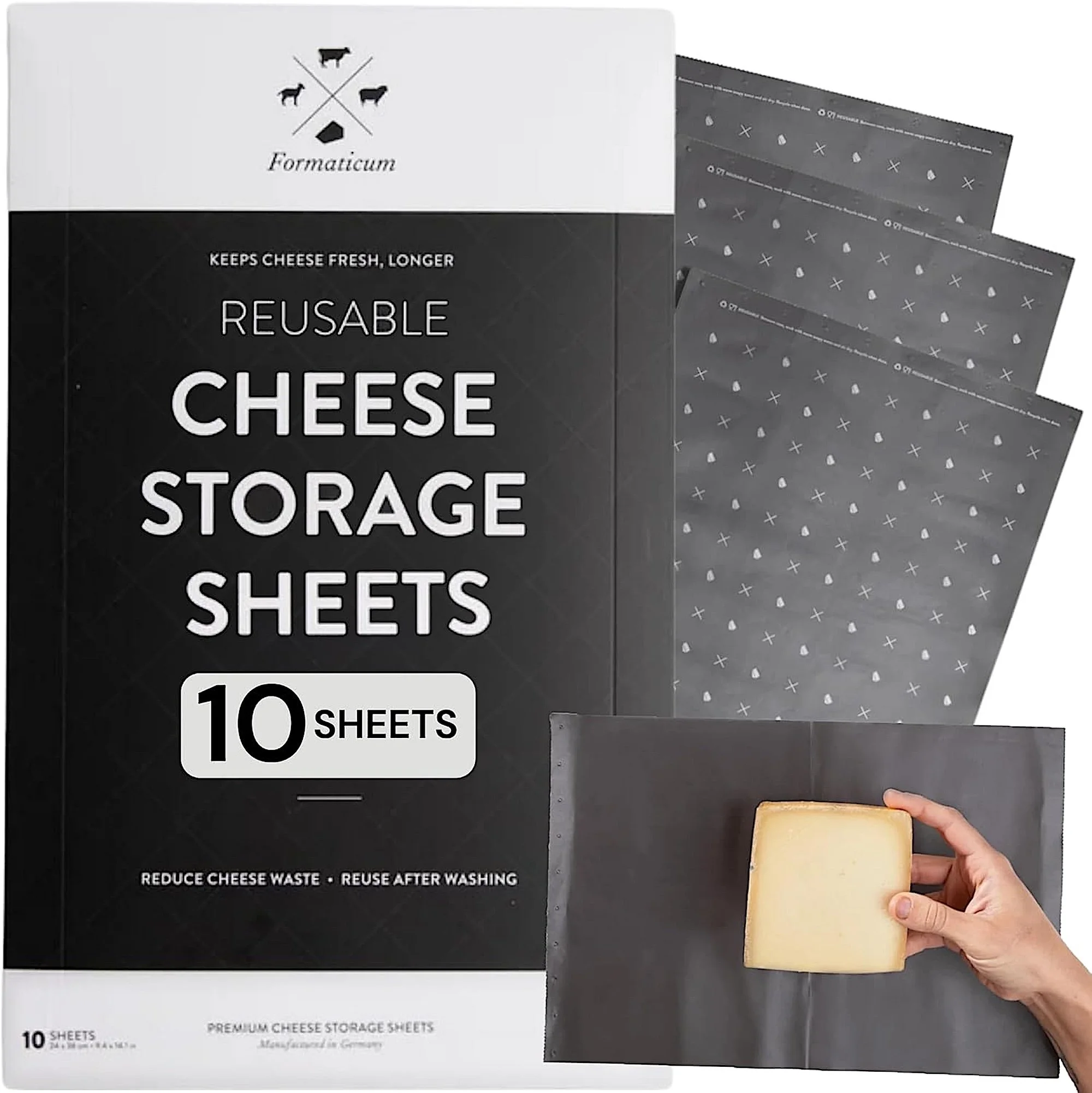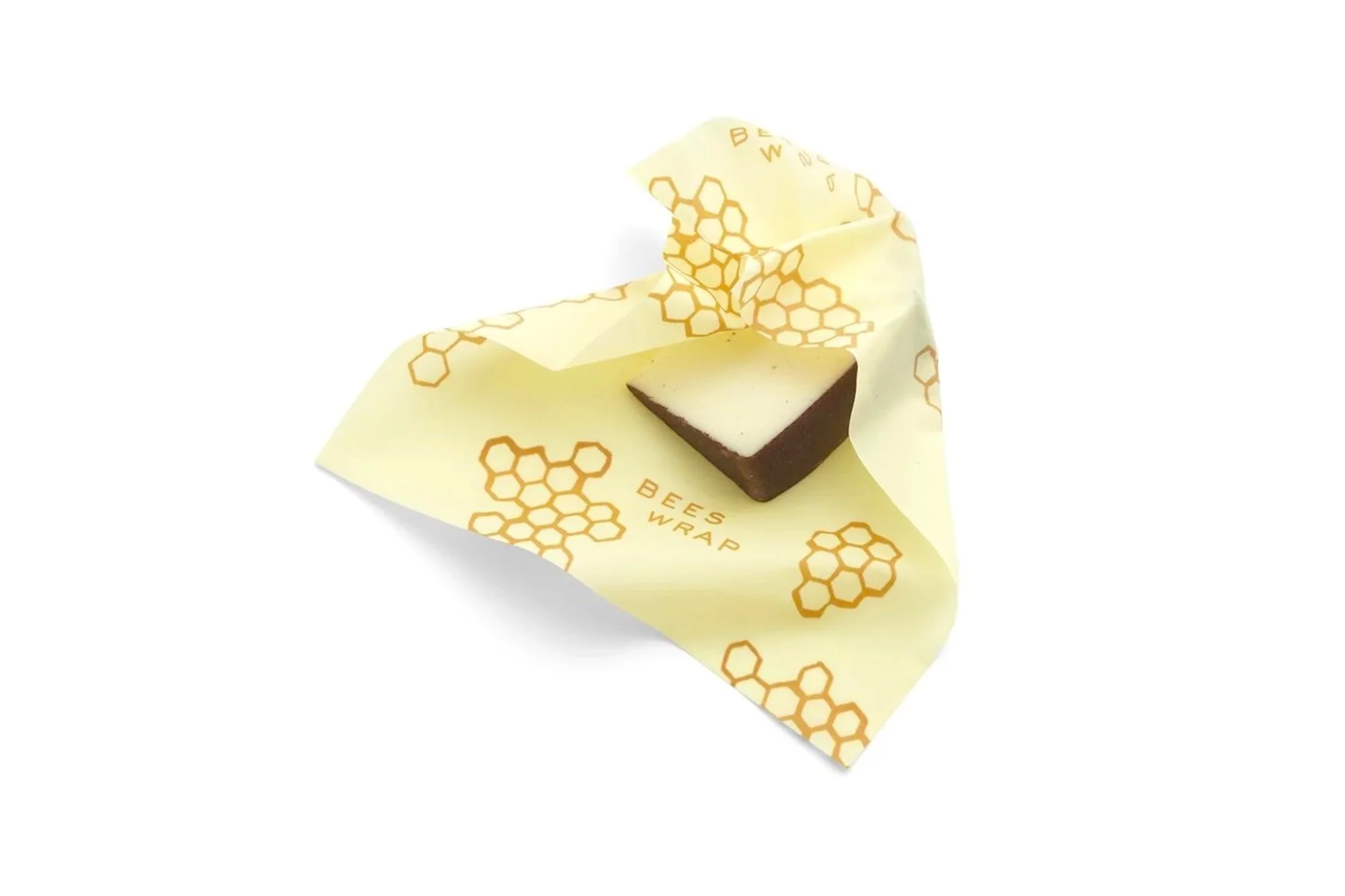What Should You Wrap Cheese In?
Formaggio Kitchen private label cheese paper
One of the most common questions I hear while working a cheese counter is, “What’s the best way to store my cheese?” The answer is never simple but often involves using a kind of material that is designed and built for the task. When you have a piece cut from the wheel at a full-service cheese shop, it is typically wrapped in just such a material. And while it might look like something you have at home, there is much more to it than meets the eye. Whether it’s a brie or a Parmesan, good cheese is alive when you buy it. And while those two examples differ greatly in their durability, both have some common sensitivities once they are cut. Cheese paper, the kind a cheese counter uses, or that they might sell, is designed to allow your wedge of Parm, or your half-wheel of brie to survive a few days to a couple weeks so that you can enjoy it in several small servings.
Ovtene or Formaticum Cheese Paper?
Kasia Wilson
Kasia Wilson, specialty cheese manager with Oregon’s Market of Choice, in Bend, Ore., has heard the same questions throughout her career, and she has answers at the ready.
“I personally recommend to customers to wrap in cheese-specific paper, either (brands) Ovtene or Formaticum, and frequently hand out sample sheets for them to try,” Wilson says. “I am the cheese paper evangelist here.”
Most retailers use plastic wrap for cut wheels on display, and for portions cut for self-serve retail, with the idea that customers want to see the surface of the cheese. But Wilson is pushing the envelope there, too. “Over time, I have trained my customers that I put the highest quality--and most expensive--wrapped in paper in the case, so they know to look for the paper-wrapped ones as my ‘special’ cheeses,” Wilson says. “A lot of my customers buy on that alone, knowing I think those cheeses merit extra care and it has become a selling feature here in itself.”
Ovtene vs Formaticum
In cut-to-order settings, in specialty shops or in supermarkets, the customer’s selections are cut from a wheel and then wrapped in that cheese-specific paper. But, as Wilson indicates, there has been an incremental movement toward using better material at all points in the supply-to-consumer chain.
What Makes Cheese Paper Different?
Before a cheese is cut, the rind typically provides adequate protection for the interior, so long as the cheese is stored with some degree of care. Once the cheese is cut, it will lose moisture if not protected. The trouble is, non-porous materials suffocate a cheese, making it smell and taste of ammonia. Non-porous materials tend to trap all the moisture, which can cause surface mold and accelerate spoilage. Ideal storage material, whether it is single- or two ply, lets the cheese breath without drying out. It also designed to withstand a certain level of moisture without losing its integrity.
Formaticum sheets
The top brand of cheese paper used in North America, Formaticum, comes from a New York-based company launched in 2004. Formaticum’s paper products are made in France, and the company also offers a line of cutting instruments. The company website reads:
Our cheese storage materials are designed specifically to keep cheese fresh and delicious. (They) allow oxygen to flow freely, letting your cheese breathe.
As with any effective storage material, the Formaticum products prevent over-drying, and “create a cave-like environment,” the company says.
Ovtene bags
Ovtene is a relative newcomer in the U.S. market. With business facilities in Massachusetts, its products are made in Italy. While Formaticum’s main line is made with a two-ply material involving polyethylene and porous paper, Ovtene is made from pulverized marble and calcium-based mineral. Formaticum has added a plastic-free option called Zero by Formaticum. The Zero line is made from calcium carbonate and polyethylene. Some product options are made from cellulose sourced from sustainable forestry. Their Reusable line is made of calcium carbonate and polyethylene.
In numerous trials by influencers and journalists, (including my own at-home experiments) these products have been shown to be quite effective in protecting cheese and other foods from deterioration. Wilson discovered Ovtene products at the American Cheese Society conference several years ago, and they have become her favorite.
“It took a while, but I was allowed to order the generic paper and bags to try out here in Bend, and eventually convinced our corporate people to order branded Ovtene for all the stores,” she says. “We now have paper, deli sheets and bags with MOC logos. I also sell packs of Ovtene to customers at retail.”
That last step may be the new frontier. Both Ovtene and Formaticum now produce retail products that can be purchased by consumers for use at home. Products from both companies offer some opportunity for re-use, and they have low environmental impact. Formaticum recently introduced transparent sheets derived from wood-based cellulose fibers making them 100% biodegradable and offer similar preservation performance compared to its other lines. The clear material is a potential game-changer for retailers who cut from the wheel and wrap portions for a self-serve case—a common practice in supermarkets.
Cheese Bags
Formaticum cheese bags
We've been talking about sheets, but if wrapping cheese feels like a bother, Ovtene and Formaticum both offer bags. The tops of the bags can either be taped or just folded over. Formaticum also offers reusable cheese storage bags that are particularly easy to use. According to the company the bags are made of calcium carbonate and polyethylene, this material is 100% recyclable and is also porous enough to let cheese breathe while retaining ample humidity to prevent it from drying out. You can reuse the bags by simply handwashing them, allowing them to air dry.
Beeswax Wraps
Bee's Wrap
Cheese lovers seeking even more sustainability might look to Bee’s Wrap, a Vermont-based concern that uses organic cotton cloth, beeswax, plant oil and tree resin for its wrapping sheets and bags. The Bee’s Wrap line is made in the USA., and designed to protect bread, cheese and other foods. It’s great for short term use, and works best with harder cheeses.
Proper Storage
Whatever materials you use, it is also important to store your cheese properly. Always place it in a less cold and less drafty part of the refrigerator, such as in a clean crisper, with or without clean produce. Allowing cheese to approach room temperature is the best way to enjoy it, but only bring to temp the cheese you will consume at that occasion, and return that mother piece to the fridge. Frequent drastic temperature changes can impact the quality of the cheese.
Customers also ask about using parchment paper wrapped in aluminum foil, or other commonly available materials. While Wilson avoids discussing that with customers, I would only advise this as a short-term solution in a dire situation, such as on a camping trip.
Are you wondering how to properly wrap a cheese in paper? Check out this tutorial. While most of us keep our cheese in a refrigerator, some cheese connoisseurs store their cheese in other ways. Read about all the ways to store cheese, including Cheese Grottos.







